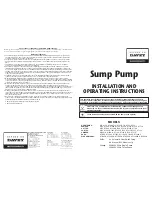
409-35001
Rev C
29
of 92
Insufficient Force -
This error can be caused by a loose pin-to-hole interference. It can also be caused by the
fixture being too thin, connector thickness problems, incorrect dimensions in the tool or connector database, or
Profile program errors. The programmer should be consulted to correct the problem.
Diagnostics
–The “Cursors” and “Graph Options” menus located below the production graph can be used to
enable or disable various diagnostic graph options and cursors. This data can be useful in understanding the
profile path taken while pressing.
Data Collection
–
Detailed data is collected for each press and written to the machine log files.
“
Export Production
Graph” –
This button is located under the “Graph Options” menu and can be used
to
save the displayed Force vs. Distance Graph to an external drive as a pdf file.
7.
PRESSING TOOLS AND FIXTURES
This section defines the general requirements for connector pressing tools and fixtures (platens) that will be
used in the press. In most cases, insertion tools and fixtures used in other manual pressing operations can be
used in this press.
Tools
The guidelines below must be followed to ensure optimum performance.
Width
–
May be any width that adequately supports the pressing force
Height
–
There is up to 130 mm clearance from table to the full up pressing head (less if using anvil
spacer on CBP). The tool, backup fixture, connector, and board assembly must be less than this
measurement.
Length
–
may be up to 250 mm (to stay within the capture of the flat rock head), single or multiple tool
combination.
Support Fixtures (Platens/ Backup Fixtures)
The support fixture, sometimes called a platen, must be made of a reasonably rigid material. The flatness
should be held to a maximum deviation of 0.10 mm for best results. Most fixtures in use on other type presses
are adequate, but flatness is often poor. Pressing to height will be a problem if the fixture is not flat.
















































